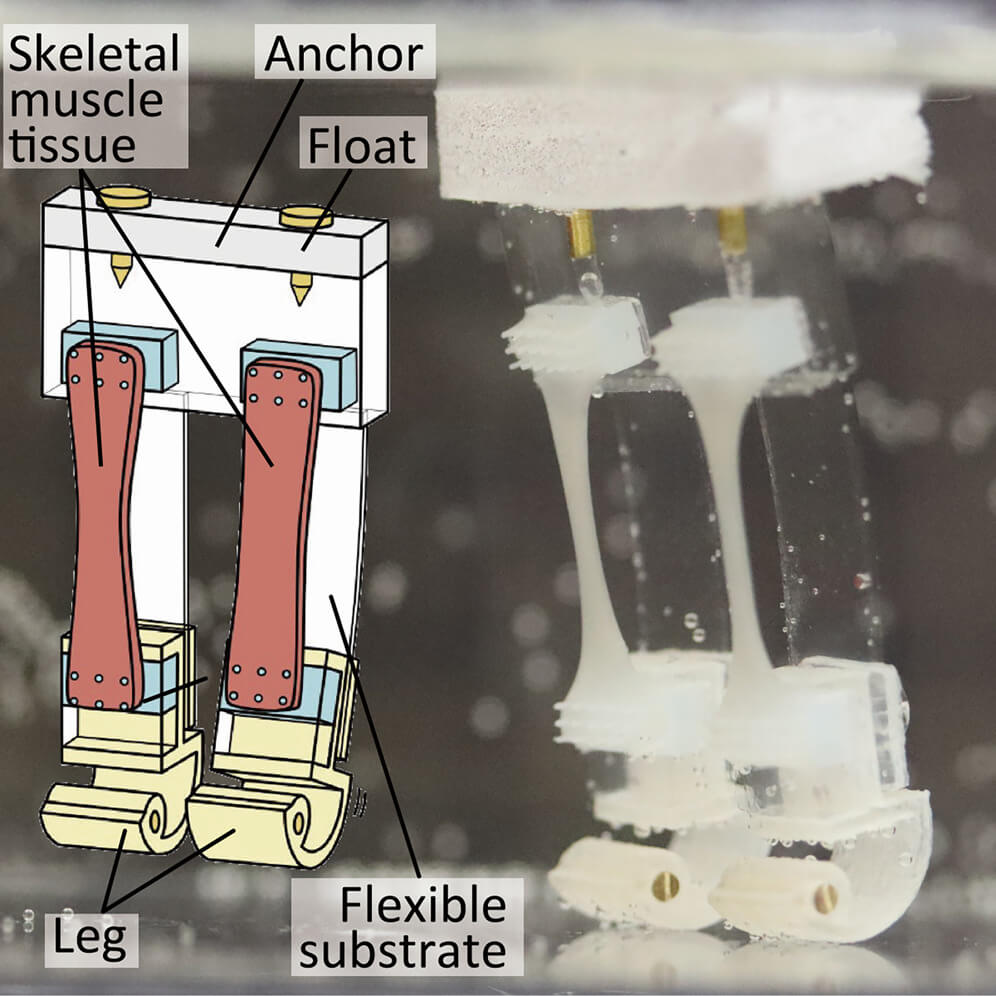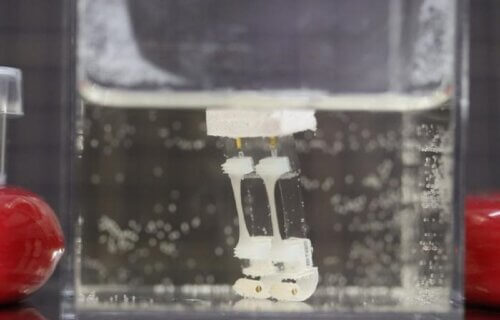TOKYO, Japan — Robots with real human components is something you might think only exists in “Star Trek” or “Battlestar Galactica,” but they may be closer to reality than you think. Scientists in Japan have achieved a significant advancement in cyborg robotics by merging human tissue with a robot, enabling it to walk using muscle-powered gears.
This breakthrough, which the researchers describe as a “giant leap” in the field, involves a robot constructed using silicone rubber and lab-grown skeletal muscle tissues. The two-legged cyborg is designed to mimic human movement and can walk and turn, although currently at a slow pace.
Researchers from the University of Tokyo focused on creating a biohybrid robot that combines muscle tissues with artificial materials. This innovative approach allows the robot to move efficiently and quietly, with a soft touch, mirroring the flexibility and fine movement capabilities of the human body.
“Research on biohybrid robots, which are a fusion of biology and mechanics, is recently attracting attention as a new field of robotics featuring biological function,” says study author, Dr. Shoji Takeuchi, in a media release. “Using muscle as actuators allows us to build a compact robot and achieve efficient, silent movements with a soft touch.”

The team’s creation is adept at walking underwater, thanks to its foam buoy top, weighted legs, and a silicone rubber skeleton that bends and flexes in response to muscle movements.
The robot’s movement is powered by lab-grown skeletal muscle tissues attached to its legs, which contract when stimulated with electricity. By alternating electrical stimulations between the left and right leg every five seconds, the robot can walk at about 5.4mm per minute or 0.002 miles per hour. To enable turning, the team activated the right leg repeatedly while the left leg acted as an anchor, achieving a 90-degree turn in 62 seconds.
Despite these achievements, Dr. Takeuchi acknowledges the need for further improvements.
“Currently, we are manually moving a pair of electrodes to apply an electric field individually to the legs, which takes time,” adds Dr. Takeuchi. “In the future, by integrating the electrodes into the robot, we expect to increase the speed more efficiently.”
Additionally, a nutrient supply system and structures need to be integrated to sustain the living tissues that allow the robot to operate in the air.
“A cheer broke out during our regular lab meeting when we saw the robot successfully walk on the video,” Dr. Takeuchi says. “Though they might seem like small steps, they are, in fact, giant leaps forward for the biohybrid robots.”
The study is published in the journal Matter.
You might also be interested in:
South West News Service writer James Gamble contributed to this report.
